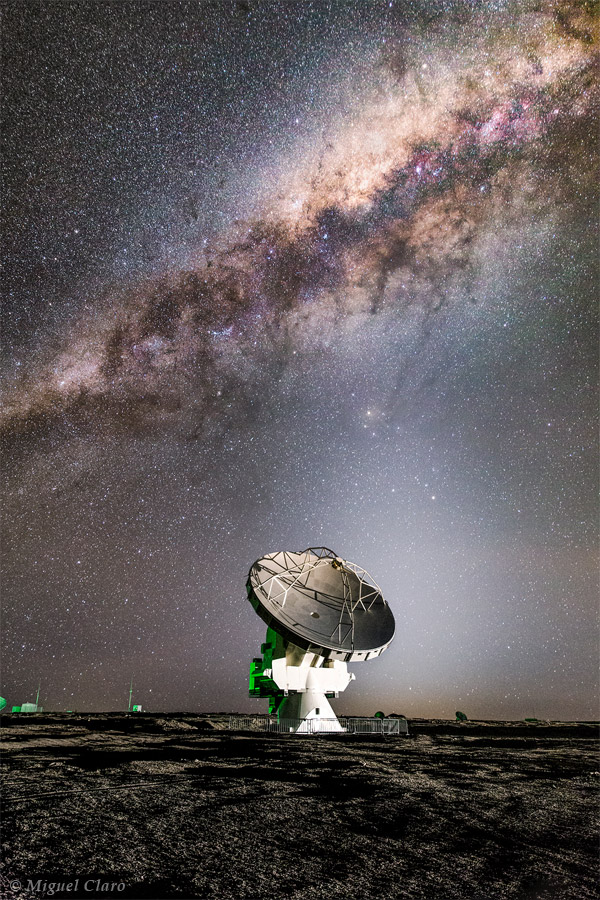Milky Way from Chajnantor Plateau
Description
The heart of our Galaxy, full of gas, dust, and star clusters, photographed next to the fainter white-blue zodiacal light in our own Solar System called the Zodiacal Light. From 5000 meters high on Chajnantor plateau in northern Chile, the Milky Way is spectacular. In the foreground is a 12-meter wide dish, pointing to a place of the cold Universe. The antenna is one of 66 in the ALMA array of telescopes. The giant antennas are portable and can spread to an area of 16 km wide in order to simulates a giant single telescope with ultimate angular resolution.
The Atacama Large Millimeter/submillimeter Array (ALMA) is an astronomical interferometer of radio telescopes in the Atacama desert. A high and dry site is crucial to millimeter wavelength operations. Observing at wavelengths of 0.32 to 3.6 mm, ALMA is expected to provide insight on star birth during the early universe and detailed imaging of local star and planet formation. Light at these wavelengths comes from vast cold clouds in interstellar space, at temperatures only a few tens of degrees above absolute zero, and from some of the earliest and most distant galaxies in the Universe. ALMA is the most powerful telescope for observing the cool Universe — molecular gas and dust. The 66 antennas can be arranged in different configurations, from a compact cluster of only 150 meters to 16 km wide, which provide astronomers a variable “zoom”.

comments (0)